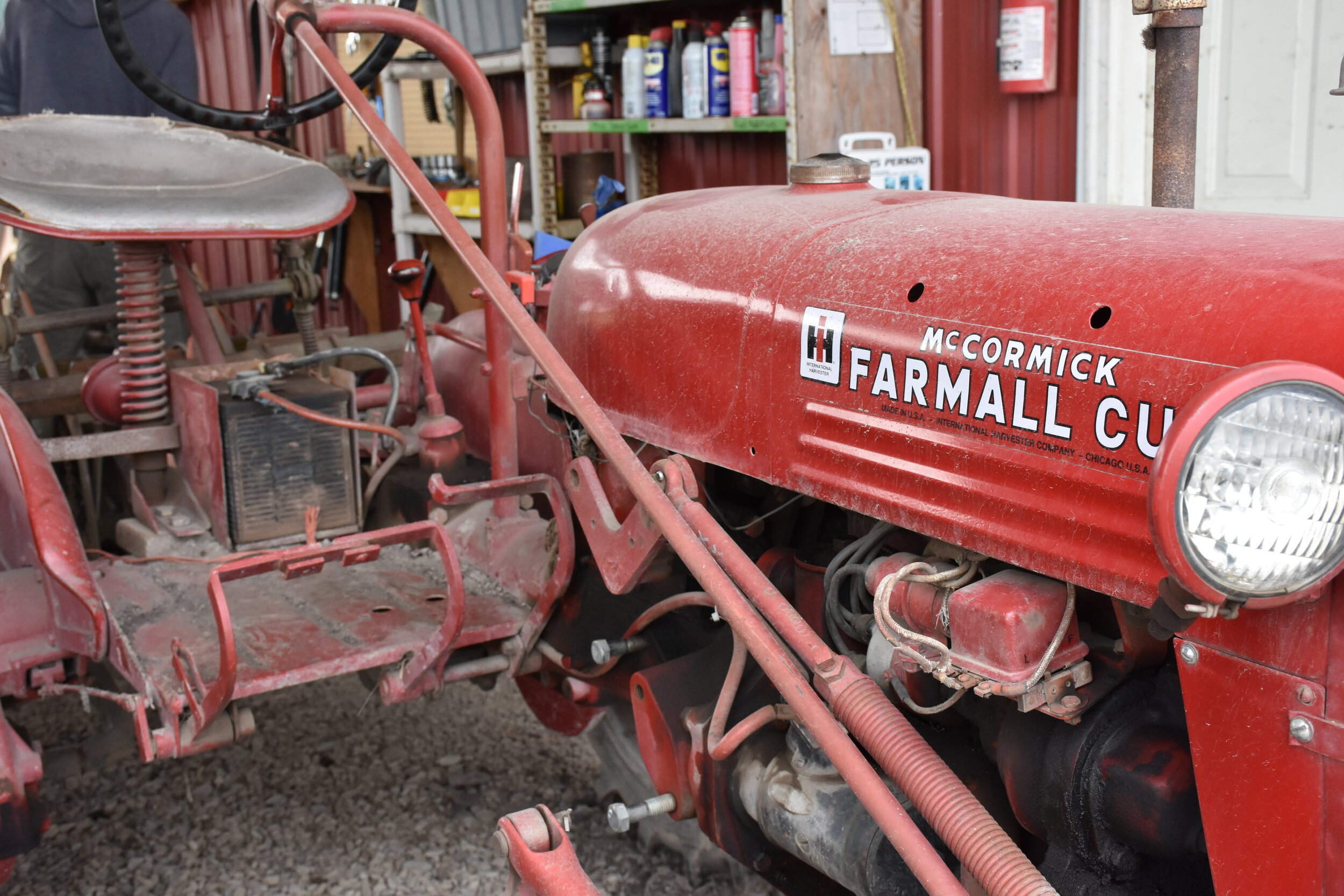Red Dog Farm Tour: A Balancing Act
It’s harvest time on Red Dog Farm, and yet it won’t be long before farm manager Lane and owner Karyn roll up their sleeves, get out their notes, and begin the planning sessions for next season. The farm prides itself on innovation, and each year there is opportunity to reimagine.
It was a cloudy and balmy, breezy day when Lane gave The Food Co-op produce team a tour of the farm. With a reassuring whoosh of irrigation water in the background, he explained that the crew can spend maybe 10 hours a week moving the three lines of pipe three times a day.
Karyn Williams started this farm in 2008 with help from the Jefferson County Land Trust. She then went on to purchase the 23 acres. Her certified organic farm has 17 of the acres in cultivation, with the other 6 in structures and a conservation easement with trees planted along the riparian zone nestled against Chimacum Creek. This year she leased a five-acre plot to help with crop rotation, allowing for that critical resting of the soil. Lane is in his fifth season on the farm and runs a crew of 14 farm hands: 10 field hands and 4 specialty crew members, with a skeleton crew over the winter.
The farm serves 50 to 60 accounts, including the PT and Chimacum Farmers Markets, Chimacum Corner and the Food Co-op, as well as a CSA and a Farm Stand. Red Dog grows plant starts and 40 different vegetable varieties—there are 10 ingredients in the salad mix alone! When asked what his favorite task on the farm is (besides those planning sessions), Lane said, “I love harvesting cabbage and broccoli—the squeaky sound is just cool. I love growing the loose greens the best because they are quick and low maintenance.” The only way you could call growing vegetables low maintenance is by having systems and Lane is all about it. He walked us through system after system designed for self-sufficiency.
SYSTEMS
The growing season must be managed with weekly successions of crops (up to 23 crops of mizuna, red mustard, and arugula!), planting, transplanting, harvesting, over wintering, and storing. With only two coolers, careful management of the flow of product is truly a balancing act.
We saw clip boards, a communication notebook, pack lists, guides for which box to use, color-coded flags—all to allow for an integrated flow of people and tasks. The fields are named after musicians! We visited “Townes” (for Townes Van Zandt), also known to a farm hand as T2 Bed 3 to specify a row that needs tending depending on the color of the flag. Walkie talkies are a recent addition to communicate over the many acres.
INNOVATE
Red Dog loves tractors! One innovation is to make modern adaptations to old, solidly built equipment. We all wanted to know about their Flame Weeder, not something you see everyday. Timing is important. You must burn off any tiny weeds before the seeds have sprung. The attachment has two propane tanks with hoses in a giant metal box that looks like a vacuum cleaner with four flames hovering just 4” over the soil. The unit is safe to use even in the windy Chimacum Valley. We also checked out the cultivator tractor, an old McCormick Cub from the 1940s with its many attachments: the side knives for when the crop first comes up, finger weeders with flexible spider-like tines to loosen weeds, the “S” tine to carve a nice line right next to the row of plants to dislodge tiny weeds, and the arm to sweep between the rows.
We saw a unit with three different seed attachments with plates to determine size of seed, a wheel to direct the seed into its spot, and then a tamper to roll over and smooth it out. No need to improve this system after 60 some years. The Water Wheel Transplanter, also with three chambers makes a divot and adds a shot of water spaced just so to make ready for the transplant. Spacing is key to the whole system.
The greenhouse was fitted with hot water heater pipes with tiny irrigation tubes running along in rows on the greenhouse tables keeping the soil warm. The day we visited onions were drying in the greenhouse, with fans helping air flow. This year the crew took one of the infamous tomato greenhouses and tried growing some seedless watermelon for fun. They learned a lot, having to plant pollinator plants in between and monitor the temps.
THE PACK SHED
Did I say Red Dog was innovative? The loose salad greens salad spinner was stand up and applaud worthy! There were two of them hooked up to old washing machines with timers to spin the salad greens. The salad green mix recipes were posted for the farm “chefs.” A wooden barrel washer cleaned the roots and potatoes, sending thousands of pounds of vegetables through in a matter of hours. (See video!)
A new idea is to cut a hole in the wall of the pack shed to connect the cooler and avoid having to pack up and cart the bins outside. Lane is always thinking of new solutions to make the work go smoother. All of these systems and flow of ideas keep the crew working efficiently.
We visited the break room where the crew has a weekly lunch together prepared by a community member. Up on the wall was a chronologic photo album of the crew over the years. We saw our produce department lead Cha up there and Laura, the manager of The Food Co-op produce department. It represented an evolution of dedicated people in our community working hard to keep us fed. It is humbling work, fascinating to learn about, and we are all very lucky to have access to organic local food.








